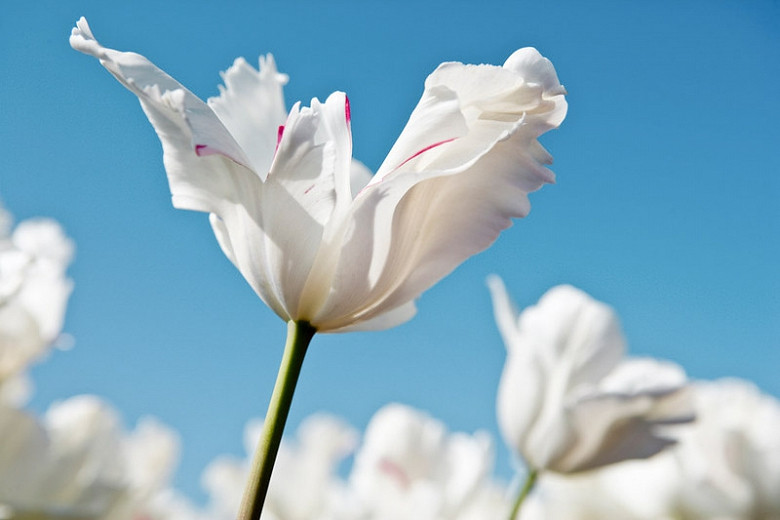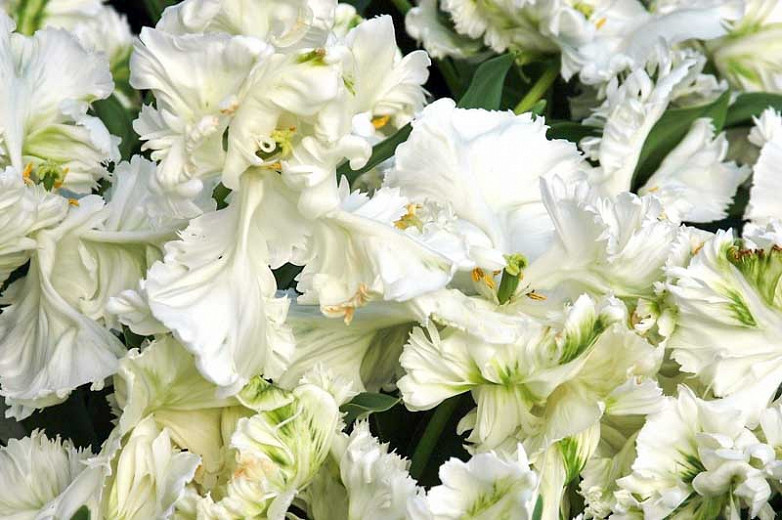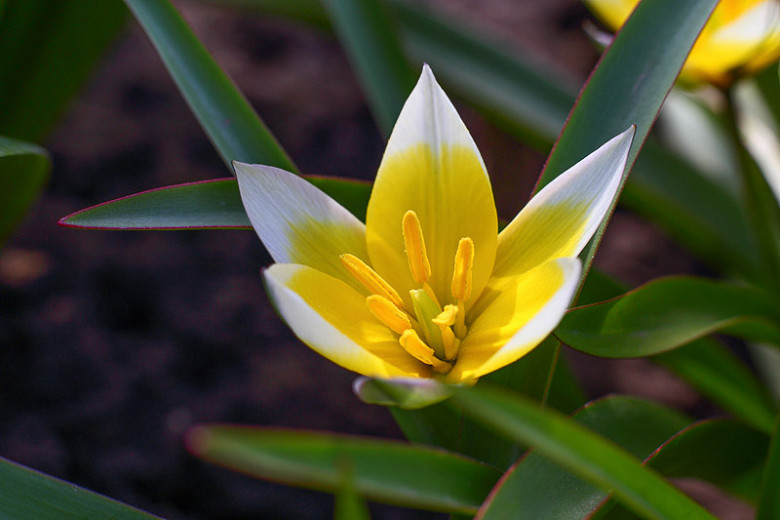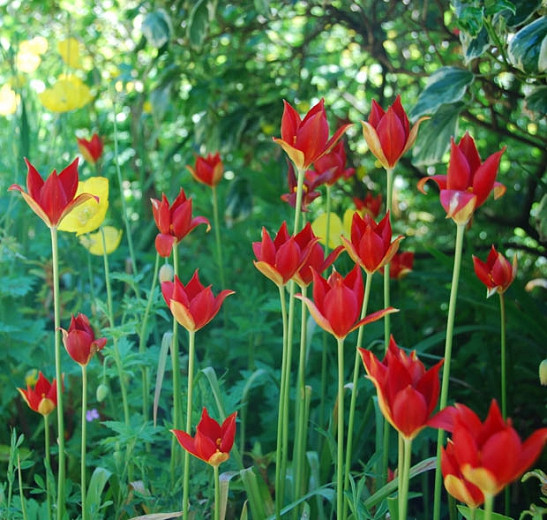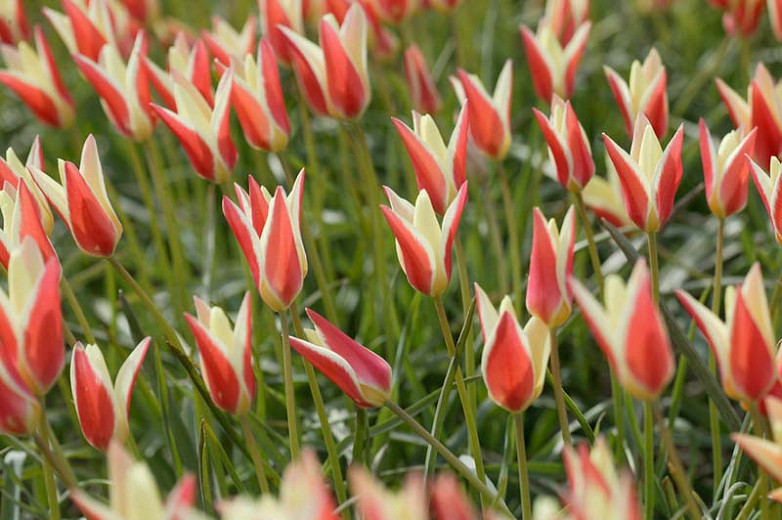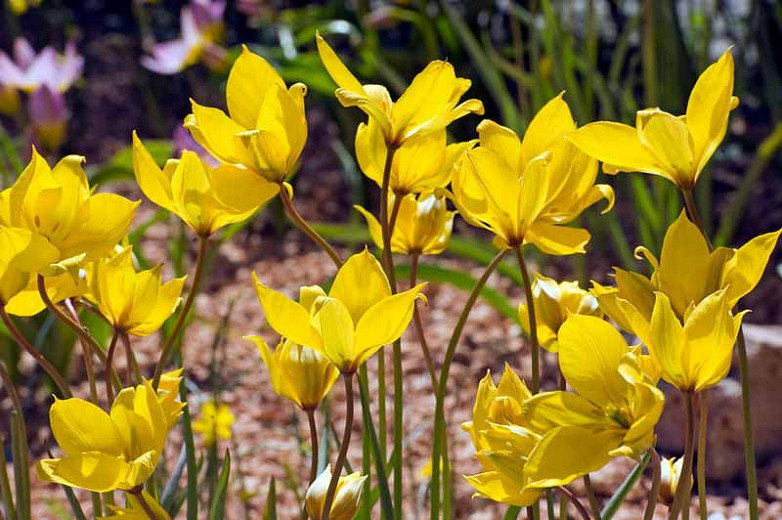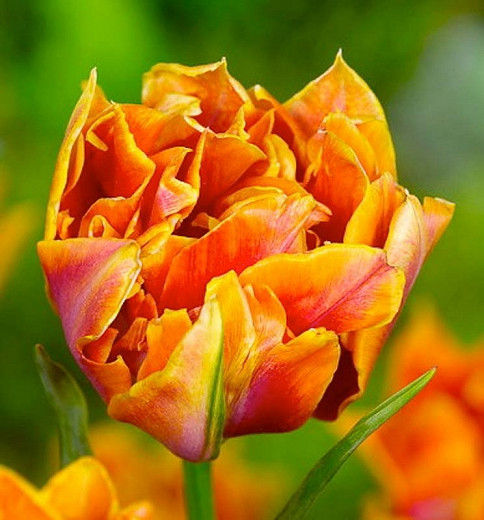Tulipa White Parrot (Parrot Tulip)
Tulip ‘White Parrot’ is quite a refreshing sight with its oversized, ivory-white ruffled blooms, often feathered in pale green and looking like parrot feathers.
Tulip 'White Parrot' is quite a refreshing sight with its oversized, ivory-white ruffled blooms, often feathered in pale green and looking like parrot feathers. As its large flower is exposed to the sun over time, it opens so wide that it almost flattens out, revealing its brilliant colors. Blooming in late spring, this spectacular tulip belongs to the Parrot Tulips group.
- Growing up to 18-20 inches tall (45-50 cm), this tulip creates dazzling harmonies with other late-season flowering bulbs.
- Performs best in full sun in rich, fertile, medium moisture, well-drained soils. Prefers areas with cool winters and warm dry summers.
- Easy to grow, this tulip is a welcomed addition to beds, borders, and containers. For best visual impact, plant in groups (at least 10 to 15 bulbs) or mixed with any other flowering bulbs. Excellent as cut flowers!
- Although the stems of Parrot tulips are fairly strong, the great size of their flowers prompts one to plant them in sheltered spots in the garden.
- To be planted in fall.
- All parts may cause severe discomfort following ingestion and may cause an allergic skin reaction. Wear gloves and other protective equipment when handling.
- Toxic to dogs, toxic to cats, toxic to horses.
Requirements
| Hardiness | 3 – 8 |
|---|---|
| Heat Zones | 1 – 8 |
| Climate Zones | 1, 2, 3, 4, 5, 6, 7, 8, 9, 10, 11, 12, 13, 14, 15, 16, 17, 18, 19, 20, 21, 22, 23, 24 |
| Plant Type | Bulbs |
| Plant Family | Tulipa – Tulips |
| Exposure | Full Sun |
| Season of Interest | Spring (Late) |
| Height | 1' – 2' (30cm – 60cm) |
| Spread | 4" (10cm) |
| Spacing | 4″ (10cm) |
| Depth | 7" (17cm) |
| Water Needs | Average |
| Maintenance | Low |
| Soil Type | Chalk, Loam, Sand |
| Soil pH | Acid, Alkaline, Neutral |
| Soil Drainage | Well-Drained |
| Characteristics | Cut Flowers, Showy |
| Garden Uses | Beds and Borders, Edging, Patio and Containers |
| Garden Styles | City and Courtyard, Informal and Cottage |
